
This article teaches you how to draw a Chinese knot using pure CSS step by step, and add a red envelope rain animation effect to this Chinese knot. I hope it will be helpful to everyone!

The Spring Festival is the most important festival for Chinese people. There are many customs during the Spring Festival, which are different from east to west, north and south. In order to add to the flavor of the New Year, every household will purchase various New Year goods and decorations during the New Year to make the home prosperous, including red lanterns, red couplets, red blessing characters, and red Chinese knots.
The raw material of the Chinese knot is a simple red rope, which is woven into a diamond-shaped grid through the ingenious conception of the ancients. The ropes on the grid are tightly connected together, symbolizing the unity, harmony and happiness of the family.
#So how to use CSS to implement a Chinese knot? Let’s look at the final effect first.

Online preview Codepen address:
https://codepen.io/cliea/pen/LYOPbBr
You can also create such amazing effects, let’s get started!
First search for a picture of a Chinese knot on the Internet. There is more than one style of Chinese knot, we choose One of the most classic Chinese knot weaving styles. The quality of the picture determines the quality of the final product. Below is a picture of a relatively neat and clear Chinese knot. For our reference when writing CSS.

Can you start writing code now that you have pictures? of course not.
First of all, think about what you have to do now: draw a Chinese knot with CSS.
Have you really thought about it? Is this an achievable goal? Imagine when your leader assigns you a task: make the phone case change color according to the theme color of the APP. Will you just start writing code?
You will think about two questions:
As a software, does the APP have an interface to interact with the mobile phone case?
How does a mobile phone case change color if it receives the color value
This is a relatively extreme example, and neither of the above two methods can be achieved. Back to CSS and this image of a Chinese knot. The first thing we need to think about is, which CSS techniques should we use to realize this image. Now go back and take a closer look at the picture above.
After a short observation, we found the following Key points:
The rope of the Chinese knot is composed of gradient colors. Dark red, light red, dark red
The main part in the middle is composed of 22 intersecting ropes, and the hierarchical order is exchanged every time it passes through an intersection
There are some ring structures, and the color gradient process is the same as that of straight lines
The whole is red, with yellow embellishments
Then the imaginationimplementation principle:
Linear color gradient, use linear-gradient Or repeating-linear-gradient
ring gradient, use radial-gradient
For the intersection of the mesh, use the mask mask to achieve the intersection effect
The three-quarter loop and the two curved ropes at the bottom use clip-path To crop
To make coding more convenient, use SCSS
Many places can use it ::before ::after Implementation, reduce htmlcode
html structure.
tagheaderfooter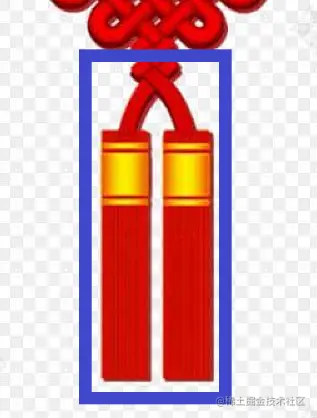
html
html It was not written once, but it became what it looks like above after constant adjustments.
45deg, we Don’t rotate it first and see what it looks like
the rope, let’s set it to -- width, this size is very important, all subsequent sizes are based on this width, so we can adjust the size of the entire graphic later, just change this --width.
:root {
--width: 1.7vh;
}11 ropes both vertically and horizontally. The gap between the ropes is about 0.5 times the width of the ropes, so the width and height of the grid can be obtained Both are 11 0.5 * 10 = 16 times the rope width, so we can write like this:
:root {
--width: 1.7vh;
--grid-width: calc(var(--width) * 16);
}
.grid {
width: var(--grid-width);
height: var(--grid-width);
}body to center the box, and then Add a dark background
body{
margin: 0;
display: flex;
justify-content: center;
align-items: center;
height: 100vh;
background: #1d1e22;
overflow: hidden;
}.grid and test it:
11 root line:
:root{
--width: 1.7vh;
--red-1: #f40001;
--red-2: #d40000;
--red-3: #8c0703;
--rope:
var(--red-3),
var(--red-2) calc(var(--width) * 0.25),
var(--red-1) calc(var(--width) * 0.45),
var(--red-1) calc(var(--width) * 0.55),
var(--red-2) calc(var(--width) * 0.75),
var(--red-3) var(--width);
--grid-width: calc(var(--width) * 16);
--bg-line: linear-gradient(90deg, var(--rope), transparent var(--width)) 0 0 / calc(var(--width) * 1.5) calc(var(--width) * 1.5);
}
.grid{
width: var(--grid-width);
height: var(--grid-width);
background: var(--bg-line);
}
.grid{
background: linear-gradient(
90deg,
var(--red-1),
var(--red-1) var(--width),
transparent var(--width)
);
}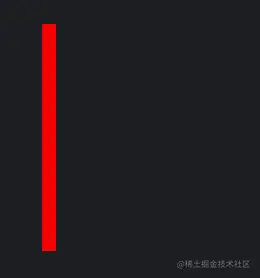
linear- gradient, then set the rotation angle to 90deg, let it gradient from left to right (the default is from bottom to top), and then set the starting value to --red-1 (You asked me where red-1 to red-3 came from? It was drawn from the renderings), and it is also set to --width --red-1, so you get a red line with a width of --width. But this is not over yet, you have to add a transparent transpanrent at --width, so that there is no filling from --width to the rightmost side of the graphic. color.
.grid{
background: linear-gradient(
90deg,
var(--red-3),
var(--red-2) calc(var(--width) * 0.25),
var(--red-1) calc(var(--width) * 0.45),
var(--red-1) calc(var(--width) * 0.55),
var(--red-2) calc(var(--width) * 0.75),
var(--red-3) var(--width),
transparent var(--width)
);
}11 times horizontally, with an interval of 0.5 times --width? Look at the code below:
.grid{
background: linear-gradient(
90deg,
var(--red-3),
var(--red-2) calc(var(--width) * 0.25),
var(--red-1) calc(var(--width) * 0.45),
var(--red-1) calc(var(--width) * 0.55),
var(--red-2) calc(var(--width) * 0.75),
var(--red-3) var(--width),
transparent var(--width)
) 0 0 / calc(var(--width) * 1.5) calc(var(--width) * 1.5);
}0 0 / calc(var(--width) * 1.5) calc(var(--width) * 1.5)
/ as the dividing line, the meaning on the left is background-positoin, and the meaning on the right is background-size.
0 0 is the upper left corner. calc(var(--width) * 1.5) calc(var(--width) * 1.5) is a square with a width of 1.5 times the rope width.
grid, and now it’s just a grid at most.
Then use pseudo-class to copy and rotate90deg:
:root{
--width: 1.7vh;
--red-1: #f40001;
--red-2: #d40000;
--red-3: #8c0703;
--rope:
var(--red-3),
var(--red-2) calc(var(--width) * 0.25),
var(--red-1) calc(var(--width) * 0.45),
var(--red-1) calc(var(--width) * 0.55),
var(--red-2) calc(var(--width) * 0.75),
var(--red-3) var(--width);
--grid-width: calc(var(--width) * 16);
--bg-line: linear-gradient(90deg, var(--rope), transparent var(--width)) 0 0 / calc(var(--width) * 1.5) calc(var(--width) * 1.5);
}
.grid {
width: var(--grid-width);
height: var(--grid-width);
background: var(--bg-line);
&:after {
content: "";
display: block;
width: var(--grid-width);
height: var(--grid-width);
background: var(--bg-line);
transform: rotate(90deg);
}
}不能说完全不相干,但是人家一看就经过了能工巧匠的编织,咱们这只能算简单的叠加,怎么才能让上面变成下面呢?
经过仔细的观察,发现只要把上面一层横着的线,稍加一些遮挡就能实现交叉编织的效果。用哪个css属性实现呢?那就只有mask 了。
下图蓝色框是需要遮挡的部分,绿色框是需要重复的部分。
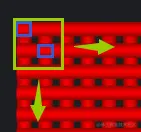
仔细分析一下绿框的构成:
本质上是在一个3×3的正方形上挖两个1×1的小洞,位置分别是0 0 和 1.5 1.5。我们要如何画这样一张图?并把这张图应用到mask上呢?
mask是通过传入的图片进行遮罩处理,而背景图除了传入一张png以外,CSS还内置了几个生成背景图的函数:
linear-gradient:线性渐变repeating-linear-gradient:重复线性渐变radial-gradient:径向渐变conic-gradient:圆锥渐变这些函数都可以和mask配合。这里我们使用conic-gradient实现上面的图形。
用conic-gradient 实现上图,思路要反着来:不是在方形上挖孔,而是用多个矩形将要渲染的部分填充颜色,剩下的部分自然就是透明的:
CSS实现如下:
:root{
...
--conic: #000 0 90deg, transparent 0 100%;
}
.grid {
...
&:after {
...
-webkit-mask: conic-gradient(from 0deg at var(--width) calc(var(--width) * 1.5), var(--conic)) 0 0 / calc(var(--width) * 3) calc(var(--width) * 3),
conic-gradient(from 90deg at calc(var(--width) * 2.5) 0, var(--conic)) 0 0 / calc(var(--width) * 3) calc(var(--width) * 3),
conic-gradient(from 180deg at calc(var(--width) * 1.5) var(--width), var(--conic)) 0 0 / calc(var(--width) * 3) calc(var(--width) * 3),
conic-gradient(from 90deg at 0 calc(var(--width) * 2.5), var(--conic)) 0 0 / calc(var(--width) * 3) calc(var(--width) * 3);
}
}预览效果

目前为止完整代码
:root{
--width: 1.7vh;
--red-1: #f40001;
--red-2: #d40000;
--red-3: #8c0703;
--rope:
var(--red-3),
var(--red-2) calc(var(--width) * 0.25),
var(--red-1) calc(var(--width) * 0.45),
var(--red-1) calc(var(--width) * 0.55),
var(--red-2) calc(var(--width) * 0.75),
var(--red-3) var(--width);
--grid-width: calc(var(--width) * 16);
--bg-line: linear-gradient(90deg, var(--rope), transparent var(--width)) 0 0 / calc(var(--width) * 1.5) calc(var(--width) * 1.5);
--conic: #000 0 90deg, transparent 0 100%;
}
body{
margin: 0;
display: flex;
justify-content: center;
align-items: center;
height: 100vh;
background: #1d1e22;
overflow: hidden;
}
.grid {
width: var(--grid-width);
height: var(--grid-width);
background: var(--bg-line);
&:after {
content: "";
display: block;
width: var(--grid-width);
height: var(--grid-width);
background: var(--bg-line);
transform: rotate(90deg);
-webkit-mask: conic-gradient(from 0deg at var(--width) calc(var(--width) * 1.5), var(--conic)) 0 0 / calc(var(--width) * 3) calc(var(--width) * 3),
conic-gradient(from 90deg at calc(var(--width) * 2.5) 0, var(--conic)) 0 0 / calc(var(--width) * 3) calc(var(--width) * 3),
conic-gradient(from 180deg at calc(var(--width) * 1.5) var(--width), var(--conic)) 0 0 / calc(var(--width) * 3) calc(var(--width) * 3),
conic-gradient(from 90deg at 0 calc(var(--width) * 2.5), var(--conic)) 0 0 / calc(var(--width) * 3) calc(var(--width) * 3);
}
}没错,这个图形,只用了.grid这一个标签!
但是只有网格还不够,让我们继续。
回头看一下参考图:
嗯,环形渐变,那就是radial-gradient了:
.ring-small {
i {
position: absolute;
width: calc(var(--width) * 2.5);
height: calc(var(--width) * 1.5);
background: radial-gradient(
circle at 50% 100%,
transparent calc(var(--width) * 0.25),
var(--red-3) calc(var(--width) * 0.25),
var(--red-2) calc(var(--width) * (0.25 + 0.25)),
var(--red-1) calc(var(--width) * (0.25 + 0.45)),
var(--red-1) calc(var(--width) * (0.25 + 0.55)),
var(--red-2) calc(var(--width) * (0.25 + 0.75)),
var(--red-3) calc(var(--width) * (0.25 + 1)),
transparent calc(var(--width) * (0.25 + 1))
);
}
}这样就得到了半个环形图,让我们使用定位把它和网格结合看看
/* 先给最外层加个相对定位,后面的绝对定位都相对这一层 */
.chinese-knot {
width: var(--grid-width);
height: var(--grid-width);
position: relative;
}
.ring-small {
i {
position: absolute;
top: calc(var(--width) * -1.5);
left: calc(var(--width) * 3);
}
}对比素材图,发现环形不是直接紧贴在网格上的,而是先延伸了一小段直线,再接的曲线。那我们就给它增个高吧:
.ring-small {
i {
&:before,
&:after {
content: "";
position: absolute;
bottom: calc(var(--width) * -0.5 + 1px);
width: var(--width);
height: calc(var(--width) * 0.5);
background: var(--bg-line);
}
&:after {
right: 0;
}
}
}上面使用两个伪类,为半圆环加了两截高度为 0.5 倍 --width的增高垫,效果如下图
接着复制16个这样的图形,分别定位到各自的位置上:
.ring-small {
i {
position: absolute;
width: calc(var(--width) * 2.5);
height: calc(var(--width) * 1.5);
background: radial-gradient(
circle at 50% 100%,
transparent calc(var(--width) * 0.25),
var(--red-3) calc(var(--width) * 0.25),
var(--red-2) calc(var(--width) * (0.25 + 0.25)),
var(--red-1) calc(var(--width) * (0.25 + 0.45)),
var(--red-1) calc(var(--width) * (0.25 + 0.55)),
var(--red-2) calc(var(--width) * (0.25 + 0.75)),
var(--red-3) calc(var(--width) * (0.25 + 1)),
transparent calc(var(--width) * (0.25 + 1))
);
&:before,
&:after {
content: "";
position: absolute;
bottom: calc(var(--width) * -0.5 + 1px);
width: var(--width);
height: calc(var(--width) * 0.5);
background: var(--bg-line);
}
&:after {
right: 0;
}
&:nth-child(-n + 4) {
top: calc(var(--width) * -2 + 2px);
}
&:nth-child(1) {
left: calc(var(--width) * 3);
}
&:nth-child(2) {
left: calc(var(--width) * 6);
}
&:nth-child(3) {
left: calc(var(--width) * 9);
}
&:nth-child(4) {
left: calc(var(--width) * 12);
}
&:nth-child(-n + 8):nth-child(n + 5) {
bottom: calc(var(--width) * -2 + 2px);
transform: rotate(180deg);
}
&:nth-child(5) {
left: calc(var(--width) * 1.5);
}
&:nth-child(6) {
left: calc(var(--width) * 4.5);
}
&:nth-child(7) {
left: calc(var(--width) * 7.5);
}
&:nth-child(8) {
left: calc(var(--width) * 10.5);
}
&:nth-child(-n + 12):nth-child(n + 9) {
left: calc(var(--width) * -2.5 + 2px);
transform: rotate(-90deg);
}
&:nth-child(9) {
top: calc(var(--width) * 3.5);
}
&:nth-child(10) {
top: calc(var(--width) * 6.5);
}
&:nth-child(11) {
top: calc(var(--width) * 9.5);
}
&:nth-child(12) {
top: calc(var(--width) * 12.5);
}
&:nth-child(-n + 16):nth-child(n + 13) {
right: calc(var(--width) * -2.5 + 2px);
transform: rotate(90deg);
}
&:nth-child(13) {
top: calc(var(--width) * 2);
}
&:nth-child(14) {
top: calc(var(--width) * 5);
}
&:nth-child(15) {
top: calc(var(--width) * 8);
}
&:nth-child(16) {
top: calc(var(--width) * 11);
}
}
}就得到了这样的效果
哈哈,很像下水管道~
还是先看素材:
嗯,不得不怀疑网易云的 LOGO 的灵感是不是就是中国结。

单个环形已经实现了,两个环也不难吧:
.ring-big {
i {
position: absolute;
width: calc(var(--width) * 6);
height: calc(var(--width) * 6);
b {
position: absolute;
left: 0;
top: 0;
width: 100%;
height: 100%;
background: radial-gradient(
circle at 50% 50%,
transparent calc(var(--width) * 0.5),
var(--red-3) calc(var(--width) * 0.5),
var(--red-2) calc(var(--width) * (0.5 + 0.25)),
var(--red-1) calc(var(--width) * (0.5 + 0.45)),
var(--red-1) calc(var(--width) * (0.5 + 0.55)),
var(--red-2) calc(var(--width) * (0.5 + 0.75)),
var(--red-3) calc(var(--width) * (0.5 + 1)),
transparent calc(var(--width) * (0.5 + 1)),
transparent calc(var(--width) * 2),
var(--red-3) calc(var(--width) * 2),
var(--red-2) calc(var(--width) * (2 + 0.25)),
var(--red-1) calc(var(--width) * (2 + 0.45)),
var(--red-1) calc(var(--width) * (2 + 0.55)),
var(--red-2) calc(var(--width) * (2 + 0.75)),
var(--red-3) calc(var(--width) * (2 + 1)),
transparent calc(var(--width) * (2 + 1))
);
}
}
}为什么 标签里要再套一个标签呢,因为接下来我们要执行 clip-path,还要给圆环增高,而clip-path 会给增高的部分也裁剪掉,所以只能再套一层,让内层的 自己 clip,增高则使用 的伪类实现。下面就是将圆环右下角 1/4 裁剪掉并且加一个增高垫的代码:
.ring-big {
i {
...
b {
...
clip-path: polygon(0 0, 100% 0, 100% 50%, 50% 50%, 50% 100%, 0 100%);
}
&:before,
&:after {
content: "";
position: absolute;
top: calc(var(--width) * 3 - 1px);
left: calc(var(--width) * 3.5);
width: calc(var(--width) * 2.5);
height: calc(var(--width) * 0.5 + 2px);
background: repeating-linear-gradient(
90deg,
var(--red-3),
var(--red-2) calc(var(--width) * 0.25),
var(--red-1) calc(var(--width) * 0.45),
var(--red-1) calc(var(--width) * 0.55),
var(--red-2) calc(var(--width) * 0.75),
var(--red-3) var(--width),
transparent var(--width),
transparent calc(var(--width) * 1.5)
);
}
&:after {
transform: rotate(90deg);
transform-origin: left top;
top: calc(var(--width) * 3.5);
left: calc(var(--width) * 3.5 + 1px);
}
}
}复制一份并定位:
.ring-big {
i {
...
&:nth-child(1) {
left: calc(var(--width) * -3.5);
top: calc(var(--width) * -3.5);
}
&:nth-child(2) {
left: auto;
top: auto;
right: calc(var(--width) * -3.5);
bottom: calc(var(--width) * -3.5);
transform: rotate(180deg);
}
}
}到这里,工作的一半就已经完成了~继续
这个图形,相对于上面几个,已经没什么难度了,五个1×1 的正方形,中间的渐变方向和周围四个垂直。
中间的正方形,用父级本身实现,里面周围四个,用四个子标签实现:
.cross-node {
.node {
position: absolute;
z-index: 2;
width: var(--width);
height: var(--width);
background: var(--bg-line);
i {
position: absolute;
width: var(--width);
height: var(--width);
background: var(--bg-line);
transform: rotate(90deg);
&:nth-child(1) {
left: calc(var(--width) * -1);
}
&:nth-child(2) {
left: var(--width);
}
&:nth-child(3) {
top: calc(var(--width) * -1);
}
&:nth-child(4) {
top: var(--width);
}
}
&:nth-child(1) {
right: calc(var(--width) * -1);
top: calc(var(--width) * -1);
}
&:nth-child(2) {
left: calc(var(--width) * -1);
bottom: calc(var(--width) * -1);
}
}
}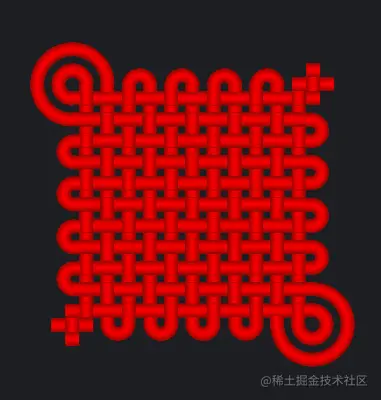
前面我们都是让中国结处于一个斜躺的姿态,写头部和尾部之前,让我们先把它摆正:
.chinese-knot {
...
transform: rotate(-45deg) translate(calc(var(--width) * 4), calc(var(--width) * -4));
}回头看素材图:
先确定一下html结构:
i 是上面的吊绳,b 是圆环,span 是衔接处的短绳,带点黄色装饰。为了方便调整定位,我们从下往上实现,先写短绳:
:root {
--yellow-1: #fced00;
--yellow-2: #f28a00;
--yellow-3: #da571b;
--bg-yellow: linear-gradient(
90deg,
var(--yellow-3),
var(--yellow-2) 20%,
var(--yellow-1) 40%,
var(--yellow-1) 60%,
var(--yellow-2) 80%,
var(--yellow-3) 100%
);
}
.header {
position: absolute;
right: 0;
top: 0;
transform: rotate(45deg);
i {
position: absolute;
bottom: calc(var(--width) * 1);
left: calc(var(--width) * -0.5);
width: calc(var(--width) * 1);
height: calc(var(--width) * 2);
background: var(--bg-line);
&:before {
content: "";
display: block;
height: calc(var(--width) * 0.5);
background: var(--bg-yellow);
}
}
}然后是圆环:
.header {
...
b {
position: absolute;
bottom: calc(var(--width) * 3);
left: calc(var(--width) * -1.5);
width: calc(var(--width) * 3);
height: calc(var(--width) * 3);
background: radial-gradient(
circle at 50%,
transparent calc(var(--width) * 0.75),
var(--red-3) calc(var(--width) * 0.75),
var(--red-2) calc(var(--width) * (0.75 + 0.15)),
var(--red-1) calc(var(--width) * (0.75 + 0.3)),
var(--red-1) calc(var(--width) * (0.75 + 0.45)),
var(--red-2) calc(var(--width) * (0.75 + 0.6)),
var(--red-3) calc(var(--width) * (0.75 + 0.75)),
transparent calc(var(--width) * (0.75 + 0.75))
);
}
}最后是长的吊绳:
.header {
...
span {
position: absolute;
bottom: calc(var(--width) * 5);
left: calc(var(--width) * -0.25);
width: calc(var(--width) * 0.5);
height: calc(var(--width) * 30);
background: linear-gradient(90deg, var(--red-2), var(--red-1) 20%, var(--red-2) 70%, var(--red-3));
border-radius: calc(var(--width) * 0.25);
}
}单独效果
整体效果
确定html结构:
可以看到,流苏部分,有两个弯曲的 1/8 环,我们用两个b 标签来表示。这个形状依然还是先画一个完整的环,然后裁剪来实现:
.footer {
position: absolute;
left: 0;
bottom: 0;
b {
position: absolute;
width: calc(var(--width) * 15);
height: calc(var(--width) * 15);
background: radial-gradient(
circle at 50%,
transparent calc(var(--width) * 6.5),
var(--red-3) calc(var(--width) * 6.5),
var(--red-2) calc(var(--width) * (6.5 + 0.25)),
var(--red-1) calc(var(--width) * (6.5 + 0.45)),
var(--red-1) calc(var(--width) * (6.5 + 0.55)),
var(--red-2) calc(var(--width) * (6.5 + 0.75)),
var(--red-3) calc(var(--width) * (6.5 + 1)),
transparent calc(var(--width) * (6.5 + 1))
);
}
}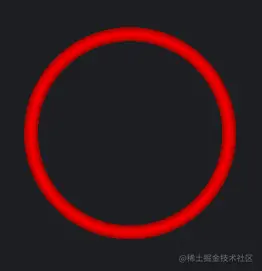
加上裁剪并定位:
.footer {
...
b {
...
&:nth-child(1) {
left: calc(var(--width) * -8.5);
top: calc(var(--width) * 1);
clip-path: polygon(50% 0, 50% 50%, 10% 0);
}
&:nth-child(2) {
left: calc(var(--width) * -16);
top: calc(var(--width) * -6.5);
clip-path: polygon(100% 50%, 50% 50%, 100% 90%);
}
}
}两个小尾巴就实现了。
最后是流苏。先画一下背景上的垂直细线,这里我们用 repeating-linear-gradient 实现,每隔 2px 画一条 1px 宽的透明度为 0.2 的黑线:
.footer {
.tassels {
i {
position: absolute;
width: calc(var(--width) * 2.5);
height: calc(var(--width) * 14);
background: var(--red-2) repeating-linear-gradient(90deg, rgba(0, 0, 0, 0.2) 0, rgba(0, 0, 0, 0.2) 1px, transparent 1px, transparent 3px) 50% 50% / 3px 1px;}
}
}再蒙上一层黄色的装饰:
.footer {
.tassels {
i {
...
&:before {
content: "";
position: absolute;
top: calc(var(--width) * 0.5);
width: 100%;
height: calc(var(--width) * 3.6);
background: var(--bg-yellow);
clip-path: polygon(0 0, 100% 0, 100% 10%, 0 10%, 0 15%, 100% 15%, 100% 85%, 0 85%, 0 90%, 100% 90%, 100% 100%, 0 100%, 0 0);
}
}
}上面代码中使用 clip-path 对黄色背景裁剪,露出两条红线,裁剪路径可以用下图表示:
最终效果:
本来到这里就应该结束了。但是我想让这个中国结有点实际用途,比如加点交互什么的。
红包也是春节的习俗之一,那就加一个拉一下中国结掉落红包雨的特效吧~
给中国结在:active状态下加个位移即可实现:
.chinese-knot {
width: var(--grid-width);
height: var(--grid-width);
position: relative;
transform: rotate(-45deg) translate(calc(var(--width) * 4), calc(var(--width) * -4));
cursor: pointer;
-webkit-tap-highlight-color: transparent;
transition: all 0.5s;
&:active {
transform: rotate(-45deg) translate(calc(var(--width) * 2), calc(var(--width) * -2));
}
}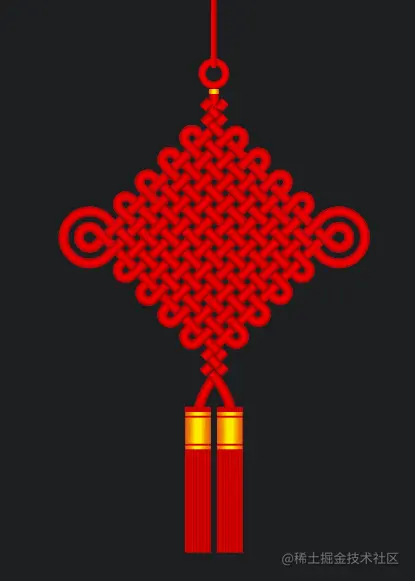
先搜索一个红包素材:
观察一下红包结构,深红背景,浅红弧形开口,加一个黄色圆形封口,上面写着一个繁体的开字。
我们可以先确定 html 结构。.rain 作为外层,代表整个红包雨,一个i标签代表一个红包:
一个标签怎么实现上面提到的三种元素呢?看代码:
.rain {
position: absolute;
top: 0;
left: 0;
right: 0;
display: flex;
justify-content: space-around;
i {
position: relative;
display: block;
width: calc(var(--width) * 5);
height: calc(var(--width) * 8);
background: var(--red-3);
border-radius: calc(var(--width) * 0.4);
overflow: hidden;
box-shadow: 0 calc(var(--width) * 1) calc(var(--width) * 1) rgba(0, 0, 0, 0.3);
&:before {
content: "";
position: absolute;
left: 50%;
transform: translate(-50%, -50%);
width: calc(var(--width) * 8);
height: calc(var(--width) * 8);
background: var(--red-1);
opacity: 0.5;
border-radius: 50%;
}
&:after {
content: "開";
position: absolute;
left: 50%;
transform: translate(-50%, 140%);
width: calc(var(--width) * 2);
height: calc(var(--width) * 2);
background: var(--yellow-2);
border-radius: 50%;
display: flex;
align-items: center;
justify-content: center;
font-style: normal;
font-size: calc(var(--width) * 0.5);
color: var(--yellow-1);
text-shadow: 1px 1px 0 rgba(0, 0, 0, 0.1);
}
}
}使用i标签自身实现红包主体,:before 伪类实现弧形的开口,:after 伪类实现黄色圆形封口,在content中写上開字。
一个红包完成了,再复制 9 个:
这样就得到了 10 个固定在顶部,并且整齐排列的红包了。
下雨嘛,从上往下运动就好了:
.rain {
...
i {
...
animation: fall 3s ease-in infinite;
}
}
@keyframes fall {
0% {
transform: translate(0, 0);
}
100% {
transform: translate(0, 100vh);
}
}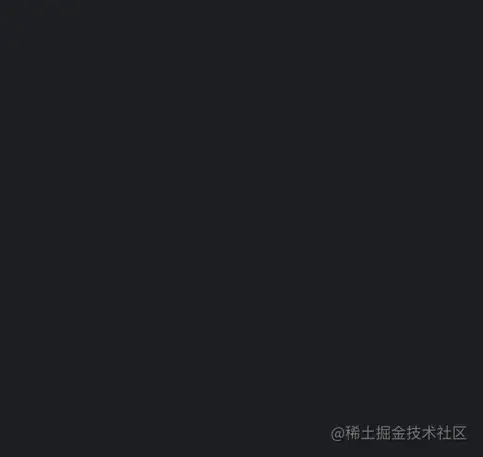
聪明的你估计已经猜到了这样的结果:谁家的雨是这样齐刷刷的下来的?
那我们就红包的垂直位置错落一点,使用 sass 的 random 函数来实现随机:
.rain {
...
i {
...
@for $i from 1 through 10 {
&:nth-child(#{$i}) {
top: random(60) + vh;
}
}
}
}
额,效果怎么和想象的不一样。依旧还是齐刷刷下落,只不过是"错落"的齐刷刷。
那我们让每个红包的开始时间也随机不就行了嘛:
.rain {
...
i {
...
@for $i from 1 through 10 {
&:nth-child(#{$i}) {
top: random(60) + vh;
animation-delay: random(30) * 0.1s;
}
}
}
}
嗯,好了一点点。但是有一个问题,屏幕上的雨点,有时候很多,有时候很少,不够均匀。那我们把动画的持续时间也随机会怎么样呢?
.rain {
...
i {
...
@for $i from 1 through 10 {
&:nth-child(#{$i}) {
top: random(60) + vh;
animation-delay: random(30) * 0.1s;
animation-duration: random(10) * 0.1s + 2s; /* 2s ~ 3s 之间随机 */
}
}
}
}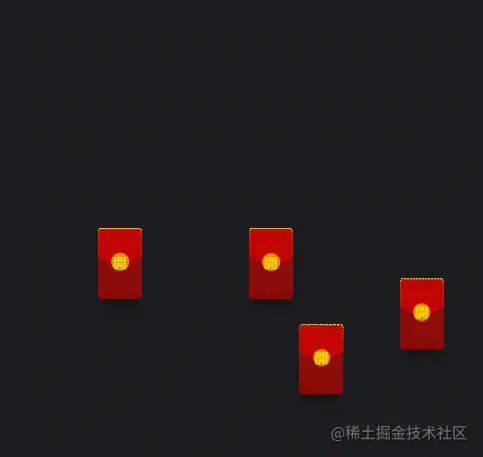
终于更像雨了~
但是现在雨滴是凭空出现的,很生硬,我们只要把开始的位置挪到负一屏,然后让它下落到正二屏就行了:
.rain {
...
top: -100vh;
}
@keyframes fall {
0% {
transform: translate(0, 0);
}
100% {
transform: translate(0, 200vh);
}
}这样就有了源源不断下落的效果。
CSS 不是 JS ,怎么触发点击事件呢?
我们就要运用 CSS 本身的特性了,checkbox 复选框有个选中状态 :checked,而复选框可以用点击切换这个状态,再使用 CSS 的兄弟选择器 element ~ element 即可实现点击添加样式的效果。
样式可以触发了,那如何触发动画呢?
animation 属性添加到元素上后,播放状态默认是 running ,我们需要先把初始播放状态改为 paused (暂停), 然后通过上面的方法,把元素的播放状态改回 running 来实现播放动画的效果:
...
.rain {
...
i {
...
animation: fall 3s ease-in infinite;
/* 默认不播放动画 */
animation-play-state: paused;
}
}
#switch {
visibility: hidden;
pointer-events: none;
}
/* checkbox 选中时播放动画 */
#switch:checked ~ .rain i {
animation-play-state: running;
}
/* 点击时重置动画,否则取消checkbox选中状态,动画会中止并停留在当前位置 */
.chinese-knot:active ~ .rain i {
animation: none;
}上面的 html 中,我们让.chinese-knot 从 div 改为 label 来指向 checkbox,方法是 label 的 for 和 checkbox 的 id 设为相同的值。
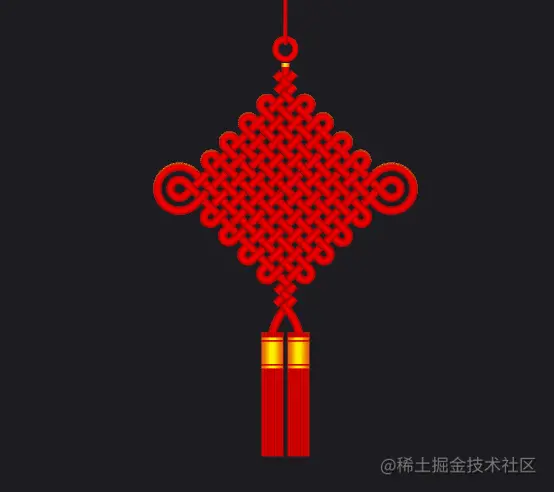
效果很不错,我们再给红包雨下落时加个背景,以提醒用户当前的状态。并且下红包雨时,调低中国结的透明度,以突出红包的存在感。
...
.bg {
position: absolute;
left: 0;
top: 0;
height: 100vh;
width: 100vw;
background: linear-gradient(0deg, #171a4b, #96367f);
opacity: 0;
transition: all 0.5s;
}
#switch:checked ~ .bg {
opacity: 1;
}
#switch:checked ~ .chinese-knot {
opacity: 0.2;
&:hover {
opacity: 0.5;
}
}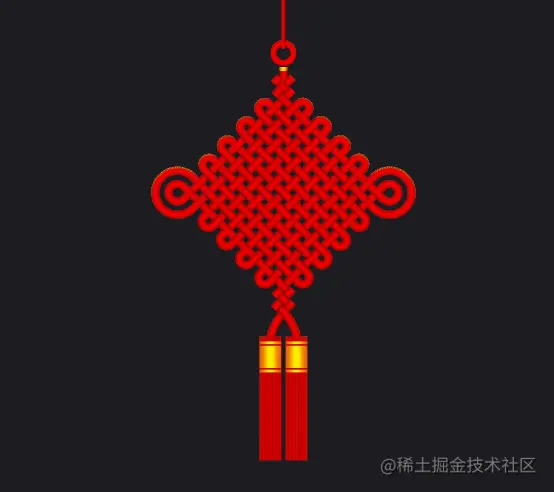
完结撒花~~~
这篇文章整理了我从搜集素材开始,创作一个作品的全部过程,代码写了一天,这篇文章写了半天。希望能让 CSS 初学者对 CSS 燃起兴趣,也希望让接触了一段时间 CSS 的朋友获得一些灵感和帮助。
(学习视频分享:css视频教程)
The above is the detailed content of I will take you step by step to draw a Chinese knot using pure CSS and add animation effects!. For more information, please follow other related articles on the PHP Chinese website!